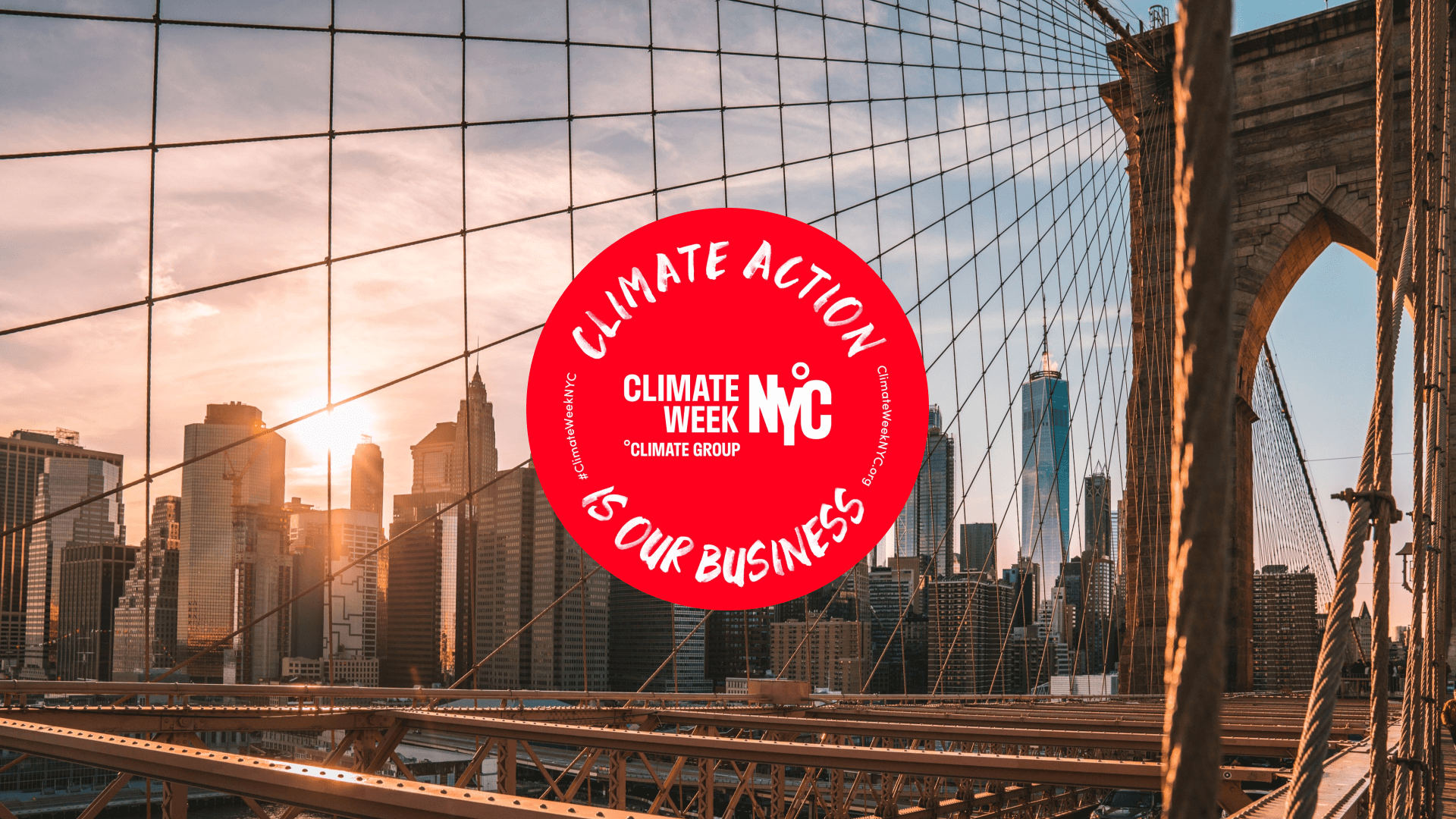
When ClimateWorks Foundation was founded in 2008, climate philanthropy was in its infancy. We heavily invested in climate solutions optimized for sector-based, gigaton-scale emissions reductions. We’ve seen the vast benefits of this approach, demonstrated by real and lasting emissions reductions, but also its limitations. Many policies have led to benefits accruing inequitably, and/or have failed to get implemented because of lack of public buy-in. We’ve learned climate solutions are most successful and enduring when they center people, and engage those most impacted by the problem.
Also at the time of our founding, the impacts of climate change were not felt as starkly as they are today where 85% of the world’s population is being affected by climate change. Our planet is baking and it’s upending people’s daily lives in ways big and small, seen and unseen.
As an organization dedicated to ending the climate crisis by amplifying the power of philanthropy, we have been moving beyond a “gigatons-first” lens to expand our focus on people-centered climate solutions. We believe this is necessary to accelerate climate action, drive people- and planet-killing emissions out of the global system, and achieve durable and just change during this decisive decade.
Gigatons-first approaches are effective but can fail if they don’t provide benefits for low-income and historically excluded communities
ClimateWorks has historically taken a techno-economic approach to solving the climate crisis. We’ve seen a lot of success with this approach – it’s been critical to identifying where we can get our biggest “carbon bang” for our buck, and helped bend the emissions curve significantly. Today, climate solutions are more affordable and more available than ever before. But these top-down techno-economic interventions can fail if they don’t take into account the direct economic and social impacts on people and communities. For example:
In France, the Yellow Vests movement and associated social unrest of 2018 was motivated by rising crude oil and fuel prices, and the disproportionate burden of fuel taxation (carbon tax) on working and middle classes. Ultimately, due to protests and unrest, President Emmanuel Macron abandoned the fuel tax.
In 2019, Ecuadorian President Lenin Moreno removed the 40-year-old fuel subsidy (both an austerity and fiscal climate measure), which led to a dramatic spike in the price of gas and diesel. Violent protests led by lower-income earners broke out and ultimately Moreno backed down and reversed the policy.
California’s solar rooftop net energy metering policy was, due to public pressure, recently amended because it favored affluent, predominately white residents while leading to increased costs for low-income rate payers.
In the United States, Congress passed the Biggert-Waters Reform Act of 2012, which imposed major increases in insurance premiums in flood-prone areas in order to reflect the “true risk of living in high-flood areas”, and which resulted in a 10-fold increase in premiums. Impacted communities and politicians expressed concerns regarding the impact of the rate increases and as a result, Congress reformed and weakened the bill.
We’ve learned climate solutions are most successful and enduring when they center people, and engage those most impacted by the problem.
We wholeheartedly believe that climate solutions and social and economic progress can and should go hand in hand. But we need to pay attention to ensure the benefits accrue equitably. It requires additional work, and also a shift in orientation. This is why we’re increasing our focus on people-centered strategies.
Expanding people-centered approaches to better support impacted communities
People-centered approaches are rooted in the belief that the best climate solutions also unlock equitable social and economic benefits, and that those closest to the problem understand the issues best and must be included in building the solutions. There are a number of broad principles guiding our approach:
- Ensure the economic and social benefits of the clean economy transition reach communities directly, while also supporting broader systemic change.
- Listen to and address the priorities of the communities most impacted by the climate solutions we support/invest in.
- Include those communities, or groups who represent them, in processes, decisions, solutions, and strategy design.
- Ensure the social and economic benefits are well understood and quantified.
These principles are informed by the tremendous work of our many philanthropic partners who have been leading the way on people-centered strategies: Oak Foundation, Ford Foundation, Rockefeller Foundation, CLIMA Fund, the Hive Fund for Climate and Gender Justice, and the Solutions Project, to name a few.
For us, in tangible terms, this means we are building in equity considerations from the very beginning. It means we are seeking out grantees who are accountable to the communities they serve, or working with larger organizations who have existing relationships with grassroots organizations. It means we are building more intersectional alliances, recognizing climate change is a multifaceted issue and needs to be addressed accordingly. It means we are beginning to build just transition strategies into all of our programs. It also means we’ll be experimenting with more participatory grantmaking approaches so that those who are most impacted can help determine how resources are allocated. While we’ve already begun some of these practices over the past several years, we are excited to do much more.
This shift in our orientation is not only a practical one to ensure policies are successful, but is also underpinned by our commitment to justice, equity, diversity, and inclusion. To ensure that the transition to a green economy is just, policies must solve one problem while not exacerbating another. The temptation to be absolutist because of the existential nature of the problem doesn’t mean it’s the most pressing issue on the minds of communities.
Examples of equitable, people-centered climate policies are abundant:
British Columbia instituted a carbon tax revenue recycling program called the Low Income Climate Action Tax Credit to ensure funds are put back into low-income communities.
Spain’s just transition deal for coal-producing regions, designed through a participatory process with coal unions, provides training, social protection, and employment opportunities for former miners.
The recent U.S. Inflation Reduction Act of 2022 directs billions of climate dollars to communities based on important equity criteria, including income, energy burden, and demographics. The list goes on.
Advancing solutions at the intersection of mitigation, adaptation, and equity
Taking a people-centered approach extends beyond climate mitigation. It also requires us to pay more attention to the climate impacts that are already devastating the lives and livelihoods of communities across the globe. According to the IPCC’s recent impact report, changes in temperature, rainfall, and extreme weather caused by climate change are increasing the spread of diseases, illness, and malnutrition, lengthening wildfire season, and increasing drought conditions in many regions. Since our founding, we’ve prioritized mitigation, but with climate change unfolding faster than scientists predicted, mitigation actions alone are not sufficient. A people-centered approach requires that we incorporate adaptation along with our unrelenting drive to cut greenhouse gas emissions.
We are already making a concerted effort to integrate adaptation where it’s in alignment with our mitigation goals. For example, in our Cooling program, we champion access to cooling to populations particularly vulnerable to extreme heat through passive solutions like solar-reflective roofs. In our Carbon Removal program, we support nature-based solutions like protecting mangroves to sequester carbon, provide food security for coastal communities, and protect coastal regions from erosion. Through our JEDI grantmaking, we are supporting grassroots movements working to address the root causes of climate change and help build resilience to climate impacts. Climate and Land Use Alliance supports indigenous communities’ land rights and management of their forests to strengthen economic security and keep trees standing.
For ClimateWorks, increasing our focus on people-centered strategies does not mean we are pivoting away from the solutions we are already championing, nor does it mean we are lightening the focus on large-scale mitigation solutions. But it does mean our orientation is shifting – to increase focus on what the impacts are for people and communities, who is at the table when solutions are designed, and ultimately where, to whom, and how the benefits get accrued. We believe this is the only approach to advancing ambitious climate action.
We have a lot more work ahead of us to fully realize a people-centered vision. We have been walking on this journey and are walking faster. But we want to make sure we’re heading towards the right destination and in the right direction – so we look forward to being challenged to do more, and do better along the way. We look forward to keeping you updated as we progress on this journey, and hearing your feedback.


